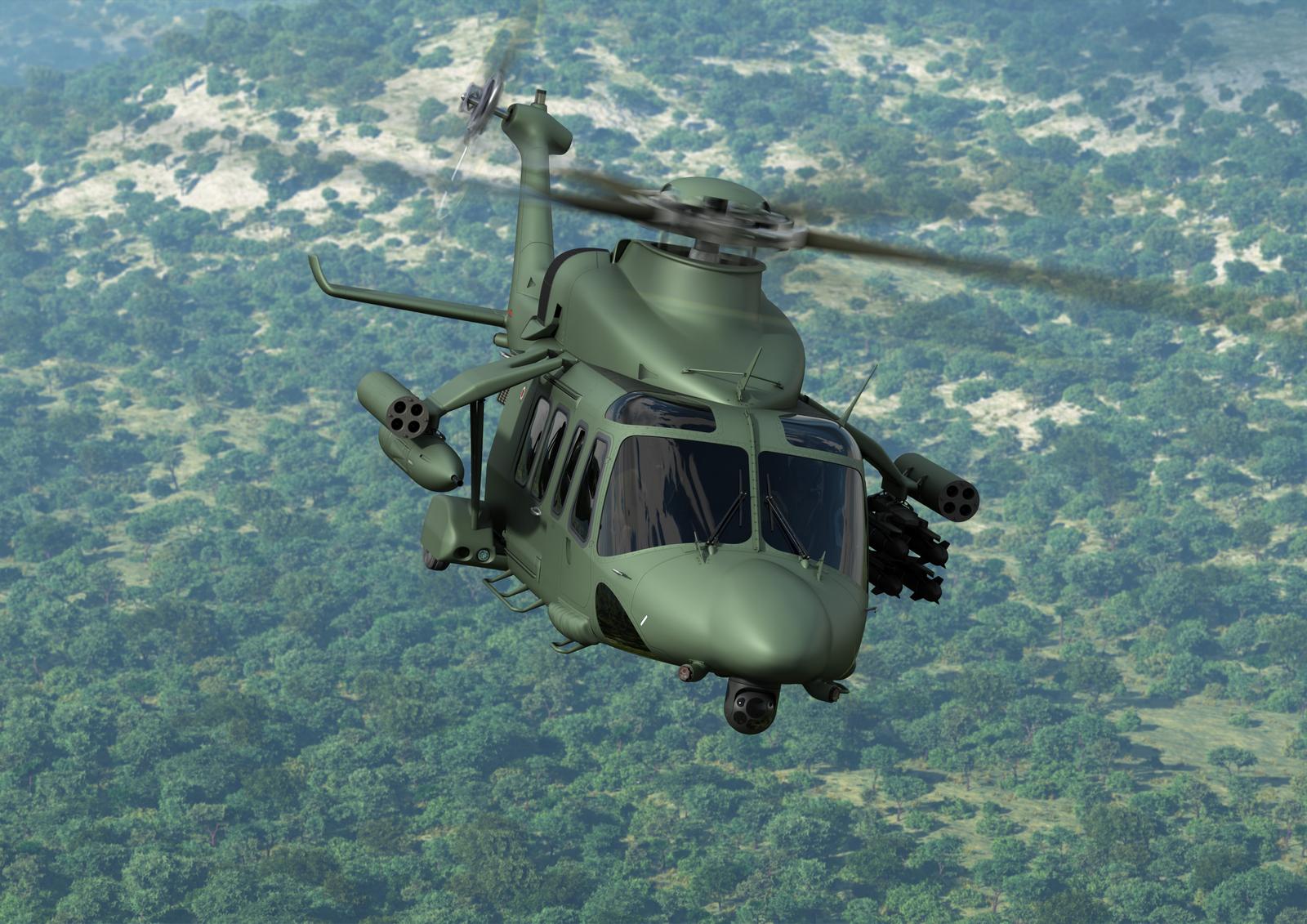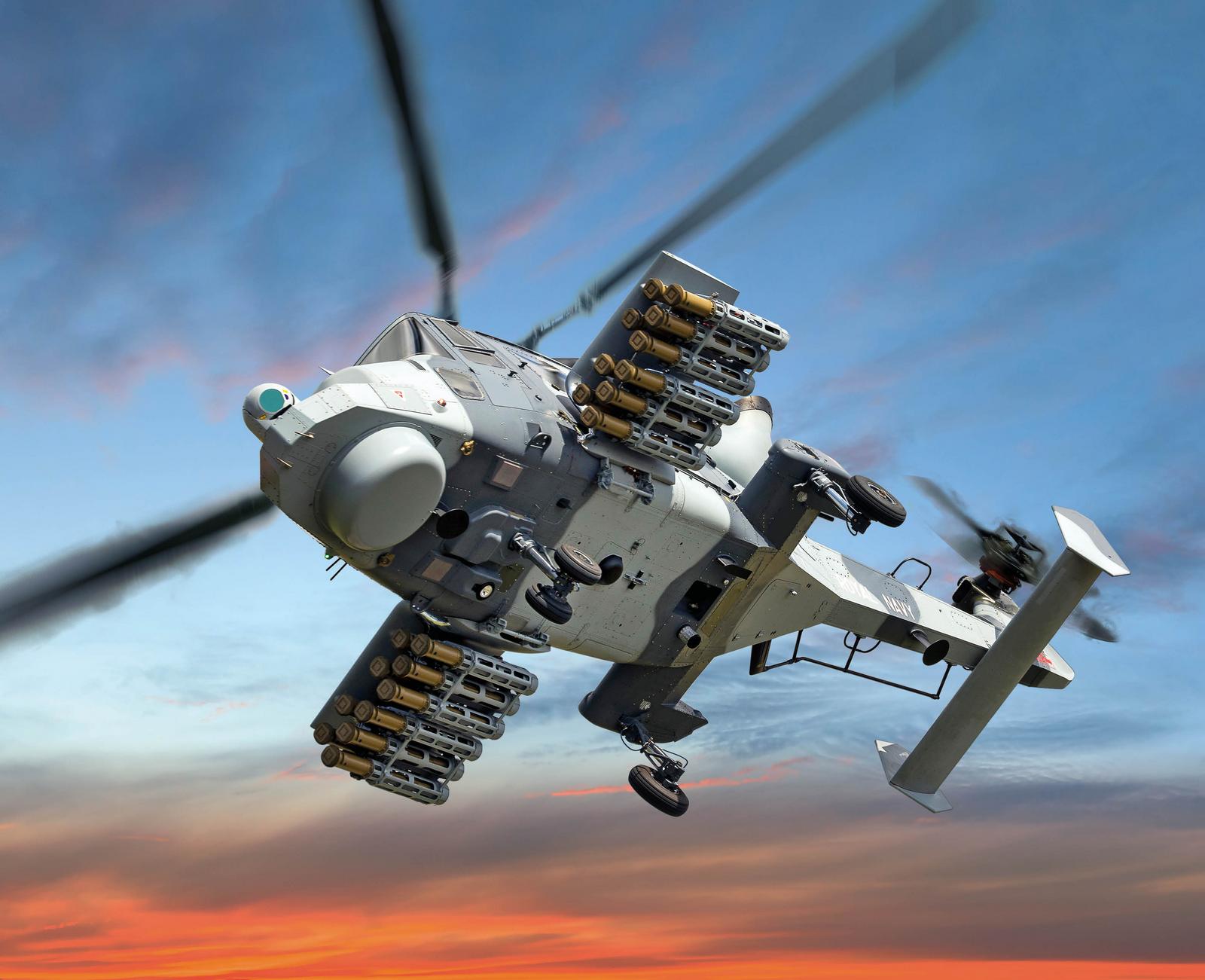Frag Out! Magazine interviews Mr. Marco Lupo, the President of Leonardo Poland.
Considering the context of the news reports on the doubtful nature of the possibility to operate the W-3 (Anakonda, Głuszec, Sokół) helicopters over a longer period, can Leonardo shed a light on its long-term plans made with regards to the future of this platform?
It will be difficult, or actually impossible, to maintain a fleet of helicopters built on the W-3 (Sokół) platform for a long time because, as is typical for the industry around the world, the manufacturer must cooperate with many subcontractors. Unfortunately, Sokół will not soon have the support of some Poland located suppliers. Thereby modernization of Sokol is unprofitable in the long run. We did our best to create the condition for carrying out the modernization program. The W-3 Next Gen is an example of our commitment and our conviction in the modernization project, but there are feasibility aspects which are self-evidently beyond us. The Polish army and other Polish institutional clients can get a new Polish helicopter on the proven AW139 platform on a similar price scale as the modernized Sokół today.

PZL-Świdnik is part of the long tradition of the “Aviation Valley” in south-eastern Poland, which is why it can do more – not only exporting helicopters in pieces as a center of aviation structure excellence, it can produce complete helicopters that will fly out of plants within two years of starting the procedure of transfer the entire technology.
We believe that this new Polish multi role helicopter is not only a solution but an opportunity for polish aviation industry, armed forces, economic development and jobs creation including highly specialized. Of course we remain fully available to respond to any Government’s evaluation and decision, in case a Sokol fleet upgrade is instead chosen as a preferred option.
What could Leonardo offer, within the framework of the Perkoz program?
First of all Leonardo is ready to start the entire production of helicopters for “Perkoz” programme announced by MoD at PZL-Świdnik plants.
The Polish army and other Polish institutional clients can get a new Polish helicopter on the proven AW139 platform at a similar price scale as the modernized Sokół today. This helicopter – AW139 was developed with the participation of Polish engineers and technicians, yet before the Polish plant became a part of Leonardo. That’s why Poland is entitled to tell the helicopter that it is also Polish. PZL-Świdnik was a risk sharing partner at that time. Today, PZL-Świdnik manufactures hulls for the AW139, but also components for many Leonardo helicopters and for other companies from the aviation industry. Why not to produce the entire, modern, new Polish helicopter? The new Polish multirole helicopter based on the AW139 platform would be manufactured in Poland and delivered to national and export markets. The new Polish helicopter variant may be exported as a local product, including G2G schemes through the Polish Government.

In our opinion, the Leonardo’s proposition means nothing but benefits for Poland: it uniquely combines a modern and proven platform reducing the risk to a minimum with the capability of PZL-Swidnik and a global leader like Leonardo to adapt the platform to Polish needs. If the MoD decides that the future helicopter will be a true multirole platform with specialized versions – there will be significant savings resulting from economies of scale and cheaper through-life-cycle service. The launch of new programmes will also create a number of highly skilled jobs and would contribute significantly to regional and national development through investments in new infrastructures and enhancement of know-how. Helicopters may fly out of the Polish plant instead of being exported in pieces. PZL-Świdnik may rise to a higher level of innovation, so that future Polish export would have high added value.
Is the offer, namely the offered aircraft, going to be made solely with the price criterion taken into the account, or is the company considering different variants of the bid, thus offering aircraft that would meet the user requirements or even surpass them?
We made clear our readiness to submit an offer, so of course we also analyzed the initial requirements of “Perkoz”. In our opinion, the current AW139 platform already meets most of those “Perkoz” requirements. However, our offer to build a Polish helicopter and locate its production and development centre in Świdnik goes beyond the nearest projects of the Armament Inspectorate. For the future of PZL-Swidnik, we intend to outline and implement new development goals that would give the company a fresh impetus and also help the aerospace industry to overcome the current crisis caused by coronavirus. For specific applications we’re of course ready to offer alternatives on a similar basis.
Should the Leonardo AW139 bid be selected, to what extent the Polish industry would be involved in manufacturing and maintenance activities on the platform in question?
Our proposal, the new Polish multirole helicopter based on AW139 platform, is founded on the total “polonization” of the new multirole platform in order to have a product 100% made in Poland. This means: manufacturing assembly, design and development of the customization, Support & Maintenance Services will be made by polish companies. Not only PZL-Swidnik but important and strategic Polish companies can be deeply involved like for instance PGZ Group, ITWL and others.

Considering the Perkoz program provisions, what armament and electronic systems can be integrated on the “Polish” AW139 variant?
Anything based on customer choice to integrate is possible for this multi-role platform: door-mounted machine guns (various calibers), externally mounted loads including guided and unguided rockets, machine guns, air-to-air and air-to-surface missiles. International and of course Polish suppliers of the armament including ammunition can be included into cooperation.Also we can name advanced flight and navigation systems for day and night operations, exclusive collision avoidance and ground proximity sensors, synthetic vision and enhanced NVG capabilities, tactical communicators, advanced 4-axis autopilot with mission modes, advanced satellite navigation, unique Full Ice Protection, unique 60+ min run-dry capable main gear box for unparalleled safety / survivability and reliability, latest certification and safety standards, best in class power margins and performance, best in class cabin space, cabin versatility and modularity, high customization level for weapon systems and self defence suites.
The AW159 helicopter operated by the Royal Navy is employed, primarily, in the ASuW role. The ASW mission, meanwhile, has been assigned to the AW101. In the case of Poland, would a similar profile of the naval helicopters fleet be recommended by the manufacturer? Or would both the AW101 and AW159 be capable of carrying out the whole spectrum of missions in the areas of anti-submarine and anti-surface operations (detection and neutralization)?
Royal Navy has big fleet and opted to have specific roles allocated between AW159 and AW101. The Polish MOD will define its requirements and we are ready to support any choice. However, as OEM we think that a fleet with the size of the polish one would gain several benefits by retaining the full capability across the whole fleet, so they may decide how to operate considering the threats and mission (for example, AW101 for long range and endurance, AW159 for operations from ships).

Should the AW159 have a full set of ASW capabilities, could Leonardo outline the possible set of equipment that should be integrated on a platform as such.
As a specialized naval multirole helicopter designed to meet the most stringent demand, the AW159 features advanced communication and information superiority, tactical awareness, deck lock, 360° electronically scanned radar, integrated ASW and ASuW systems, powerful engines and a rugged airframe with reduced footprint. It has been designed to operate from ships in the most demanding environment, up to Sea State 6. The AW159 is by far the most mission capable naval helicopter in its category and can be customized on client’s demand.
Armament that can be carried by AW159 are machine guns, missiles, torpedoes and any weapon systems required by the mission. AW159 platform is used by many armed forces in various variants, and still the helicopter is modernized according the specific needs as the come. Customer needs are still setting new directions of development, and we, as a global market player, are able to meet these requirements.

The AW159 is designed to operate according to NATO standards and can have manned-unmanned teaming capabilities on customer’s demand. Data integration and interoperability of all aircrafts and rotorcrafts is a must today, which is confirmed in various operations and demonstrations also under NATO supervision.
It offers perfect interoperability, particularly with the AW101, for example based on the experience gained with one of the most advanced Navies worldwide and within NATO, the Royal Navy.
AW159 characterizes of modern design, proven expertise through the Lynx legacy, best in class performance, rugged airframe, designed for naval operations, advanced radar, deck lock, high payload for dedicated mission and weapon systems, selected by prime navies to counter demanding threats (Royal Navy and South Korea’s Navy for example).
In addition, if selected, maintenance and some production capabilities may be established in Poland.




